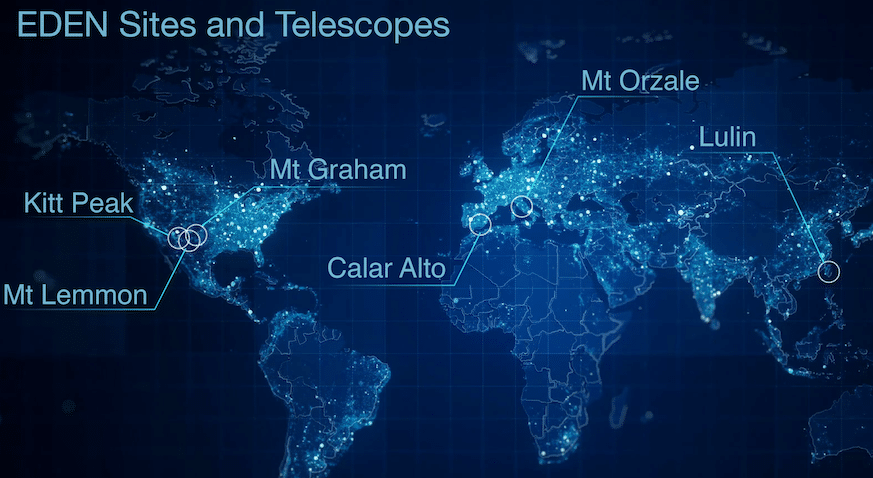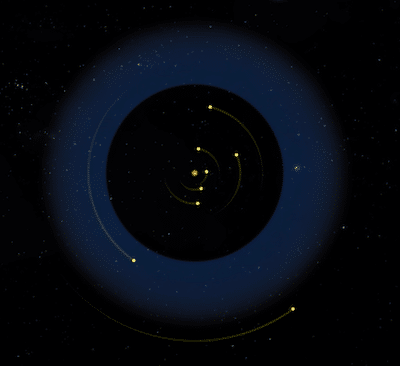Module Three: Habitability & Threats
We will combine constraints from planet formation models and the emerging planetary system architectures (Modules 1 and 2) with observations of specific systems to assess the likelihood of habitability of potential targets close to the Solar System.
Methods
Exoplanet transit observations
Orbital dynamical stability analysis
N-body simulations
Exoplanet demographics
Exoplanet formation models
HABITABLE WORLDS IN NEARBY PLANETARY SYSTEMS
Project 3.1 | Lead: Daniel Apai
Because planets closest to us can be studied in the greatest detail, nearby planetary systems (within 20 pc) will be fundamentally important for our understanding of habitable exoplanetary systems and our search for life. The number of candidate nearby planetary systems is set to increase by an order of magnitude in the next few years due to NASA’s TESS all-sky transit survey. NASA’s TESS mission is projected to find 12,000–17,000 transiting planet candidates and ESA’s PLATO mission is expected find an additional 20,000. The discovery of planet candidates, however, far outpaces confirmation and characterization efforts. As such, the vast majority of the planet candidates in the solar neighborhood will remain unconfirmed and — even for the TESS-discovered planets — the planetary architectures will remain poorly understood.
In Project 3.1 we will utilize the EDEN telescope network, one of the most powerful resources for ground-based transit surveys, to (1) help establish the nature of habitable planet candidates discovered by TESS and other surveys, (2) search for new, habitable planets in newly discovered transiting systems, and (3) obtain mass constraints through transit timing variation (TTV) measurements, whenever possible, for planets in systems containing a potentially habitable planet.


DYNAMICAL STABILITY ANALYSES OF NEARBY PLANETARY SYSTEMS
Project 3.2 | Lead: Renu Malhotra
Well after planet formation, planets within a planetary system continue to interact gravitationally with one another, causing the orbits of candidate habitable planets to vary with time. These perturbations can lead to orbital resonances, secular effects, and even collision-inducing dynamical instabilities. Dynamical studies can greatly enhance our understanding of specific planetary systems for which only sparse, partial data is available to answer these two questions: which nearby planetary systems have architectures consistent with long-term orbital stability and limited orbital variations for potentially habitable planets? which transiting systems have potentially measurable radial velocity (RV) and/or transit-timing variations to measure planets’ bulk densities?
In Project 3.2 we will combine dynamical analyses with available observational data and exoplanet population models to constrain the range of possible system architectures of nearby multi-planet systems, focusing on characterizing the masses, eccentricities, and orbital time variability of candidate habitable planets.
POSSIBLE FORMATION PATHWAYS FOR NEARBY PLANETARY SYSTEMS
Project 3.3 | Lead: Gijs Mulders
The solar neighborhood likely contains thousands of planets and planetary systems—based on statistical estimates from exoplanet surveys around more distant stars. Exoplanet surveys will discover hundreds of those planets in the coming years. When these planetary systems are detected, there will be many key properties of these planets that cannot be directly deduced from observations. A comprehensive understanding of planet formation is needed to interpret these measurements. In addition, follow-up observations can only observe a limited number of targets. To increase their efficiency, we need to prioritize targets and provide contextual information from planet formation to allow the interpretation of the observations. While there is clearly a large diversity in the population of detected exoplanets and in planetary architectures, strong correlations between planet and stellar properties have also emerged. In particular, the occurrence rates of planets vary with host stars mass and metallicity, and with binarity. These scaling relations between planet and stellar properties can be leveraged, in a probabilistic manner, to predict what types of planets can be found around nearby stars.
In Project 3.3 we will build a probabilistic model of the planetary systems expected to be found around nearby stars, based on the known correlations between planets and their host stars. Using planet formation models from the Genesis database, extended in Project 2.3, we will explore the expected range of planet compositions for each star, which will inform Project 3.3 about which nearby systems are more likely to host potentially habitable planets.

